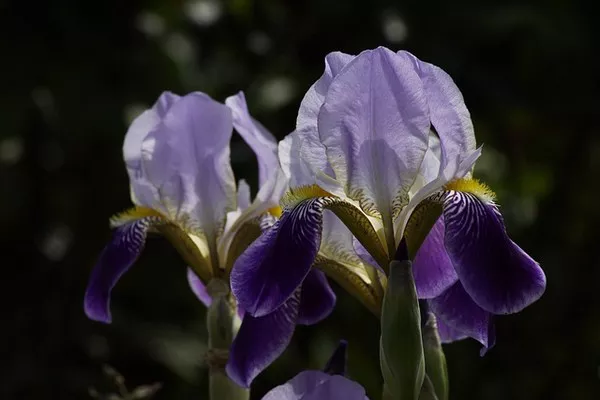Gardening is an age-old passion that not only nurtures our connection to nature but also adds a touch of beauty and serenity to our surroundings. While annuals may provide instant bursts of color, perennial flowers are the steadfast soldiers of the garden, returning year after year with their enduring charm. In this article, we explore the world of perennial flowers, highlighting the varieties that thrive and bloom season after season.
Perennials vs. Annuals
Before delving into the world of perennial flowers, it’s essential to understand the key distinction between perennials and annuals. Annual plants complete their life cycle in a single growing season. They sprout from seeds, grow, bloom, produce seeds, and then die, all within one year. On the other hand, perennials are plants that live for multiple years, returning to bloom each spring or summer, often for many years, with the proper care.
The Perennial Advantage
Perennial flowers offer several advantages for gardeners seeking long-term beauty and ease of maintenance:
Longevity: Perennials establish deep root systems, allowing them to survive harsh weather conditions and live for several years, often decades. This longevity means you won’t need to replant every year, saving both time and effort.
Low Maintenance: Once established, perennial flowers generally require less maintenance than annuals. They don’t need to be replanted each year, and many can thrive with minimal pruning and fertilization.
Cost-Effective: While the initial cost of perennial plants may be higher than annuals, the long-term savings are substantial, as you won’t need to purchase new plants every year.
Environmental Benefits: Perennials’ ability to return year after year reduces the need for constant soil disruption, minimizing soil erosion and helping maintain healthy soil ecosystems.
Attract Wildlife: Perennial gardens can attract pollinators and beneficial insects, fostering biodiversity in your outdoor space.
Continuous Bloom: By selecting a variety of perennial plants with different blooming times, you can ensure your garden remains vibrant throughout the growing season.
Top Perennial Choices
Now that we’ve explored the advantages of perennial flowers, let’s take a look at some popular perennial options for your garden:
Peonies (Paeonia spp.): Known for their large, fragrant flowers, peonies are a classic favorite among gardeners. They are hardy perennials that can live for generations, with some specimens documented to be over a century old. Peonies come in various colors and bloom in late spring to early summer.
Daylilies (Hemerocallis spp.): These hardy perennials are prized for their vibrant, trumpet-shaped flowers that come in a wide range of colors. Daylilies are known for their durability and adaptability, making them a fantastic choice for novice gardeners.
Lavender (Lavandula spp.): Lavender is a fragrant perennial herb that not only adds beauty but also serves various practical purposes. Its aromatic blooms are loved by bees and butterflies, and the dried flowers can be used for crafts, cooking, and aromatherapy.
Coneflowers (Echinacea spp.): Coneflowers are native perennials that bring a burst of color to summer gardens. They are known for their distinctive, daisy-like flowers and are excellent for attracting pollinators.
Black-Eyed Susans (Rudbeckia spp.): These cheerful perennials, with their bright yellow petals and dark centers, are a staple in many gardens. They thrive in full sun and add a pop of color to late summer and early fall landscapes.
Hostas (Hosta spp.): Hostas are shade-loving perennials known for their lush foliage. While they do produce flowers, they are primarily grown for their attractive leaves, which come in various sizes, shapes, and colors.
Irises (Iris spp.): Irises are elegant perennials that offer a wide range of flower colors and shapes. They are versatile plants, suitable for borders, water gardens, or as stand-alone specimens.
Sedums (Sedum spp.): Sedums are hardy succulents that thrive in dry, sunny conditions. They produce clusters of small, star-shaped flowers in late summer and fall and are excellent for xeriscaping.
Russian Sage (Perovskia atriplicifolia): With its silvery foliage and tall spikes of lavender-blue flowers, Russian sage adds a touch of elegance to the garden. It is drought-tolerant and attracts pollinators.
Astilbe (Astilbe spp.): Astilbe is a shade-loving perennial that produces feathery, plume-like flowers in various colors. Its unique texture and tolerance for low-light conditions make it a popular choice for shady areas.
Planting and Caring for Perennial Flowers
While perennial flowers offer many benefits, they do require some care to thrive year after year. Here are some essential tips for planting and maintaining perennial gardens:
Choose the Right Location: Select plants that are suitable for your climate and garden conditions. Ensure they receive the appropriate amount of sunlight and are planted in well-draining soil.
Planting Depth: Pay attention to planting depth, as it can vary depending on the species. Follow the instructions on the plant’s tag or consult gardening references for guidance.
Watering: Newly planted perennials may require more frequent watering until they establish their root systems. Once established, water deeply but infrequently to encourage deep root growth.
Mulch: Applying a layer of organic mulch around your perennials helps conserve soil moisture, suppress weeds, and maintain even soil temperatures.
Fertilization: Depending on the plant’s needs, consider adding organic compost or slow-release fertilizer in the spring to provide essential nutrients.
Pruning: Prune dead or spent flowers to encourage continuous blooming and maintain the plant’s shape. Prune at the appropriate time, as some perennials are best pruned in the fall, while others benefit from spring pruning.
Dividing: Over time, some perennials may become overcrowded. Divide them every few years to promote healthier growth and create new plants to share or relocate.
Conclusion
Perennial flowers are the backbone of a beautiful and sustainable garden. With their ability to return year after year, they offer an enduring source of joy for gardeners and a haven for pollinators. By carefully selecting the right perennial varieties and providing them with the necessary care, you can create a garden that not only blooms with vibrant colors but also enriches your outdoor space for years to come. So, roll up your sleeves and start planning your perennial garden—it’s a long-lasting investment in natural beauty.


